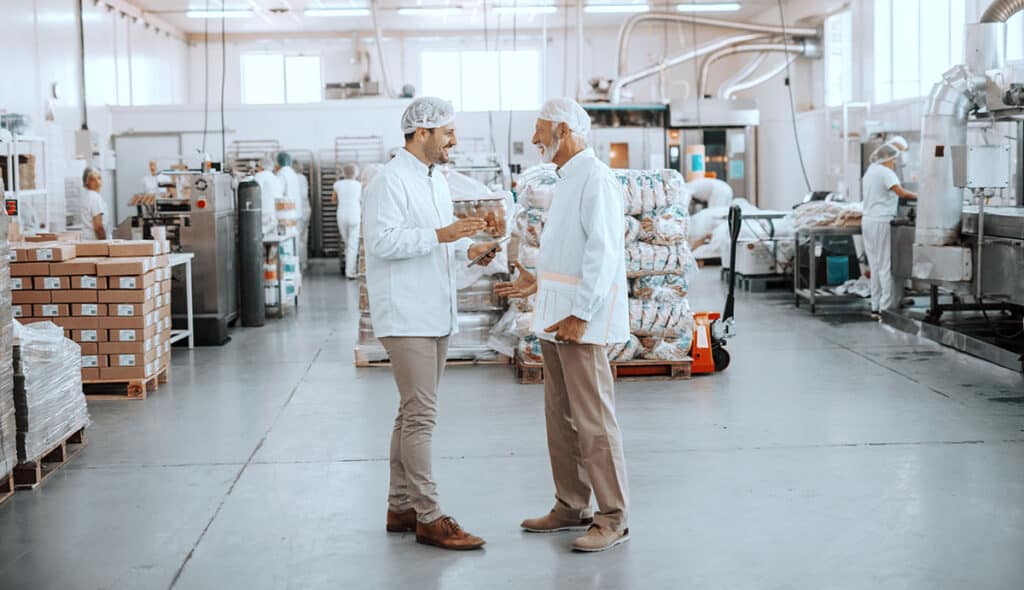Food processing facilities have to ensure the highest safety standards while handling food products for consumption. Bacteria can grow in damp areas or on equipment if it is not properly cleaned. While this all might sound simple and basic enough, floor space is actually very critical to a processing plant’s operations.
Easily cleanable materials
The U.S. Food and Drug Administration’s Guidance Regulation report for Retail Food Protection explained that surface characteristics for indoor areas have to be both smooth and cleanable. The report added that areas that are highly prone to moisture such as food preparation areas, walk-in refrigerators, bathrooms or washing areas should have nonabsorbent surfaces for easier cleaning.
“Walls and ceilings may be constructed of a material that protects the interior from the weather and windblown dust and debris,” the FDA report stated.
Flooring and spacing
The factory floor material should be smooth, waterproof and hard with an anti-slip finishing preventing injuries, the Food and Beverage Reporter stated. Additionally, some processing facilities that work with meat cutting should have cutting done in separate rooms to prevent any cross contamination on the facility’s other products.
“In open food areas in particular, a high performance and functional floor which fulfills the requirements of the HACCP International Food Standard (IFS), those for volatile organic compounds (VOCs) and also workplace safety, forms the basis for quality and high-value products in the meat industry,” said Gary Johnson, business section manager for Performance Flooring, according to the source.
The spaces in these areas have to be open so workers are able to move around heavy machinery and other large pieces of equipment, comfortably and safely. The open spaces also allow for easier cleaning so stray food products don’t get lost or avoided during cleaning periods.
Certain pieces of equipment can take up large amounts of space in food processing facilities. However, larger critical pieces of equipment like shell and tube heat exchangers can be customized specifically to the facility to create more floor space throughout a manufacturing facility. They can also be mounted vertically, overhead, or in a mezzanine area.
Handling multiple cleanings
Flooring and process equipment has to be able to withstand numerous cleanings since sanitary practices are followed each and every day, since food processing facilities are able to build up bacteria quickly.
“Puddling of cleaning solutions, if allowed to evaporate, may lead to deposits on the surface and ‘water marks’ which can be hard to remove subsequently,” Johnson said, according to Food and Beverage Reporter. “It follows that removal of cleaning solutions and adequate rinsing is required to keep your floor looking its best. Contaminants that could quickly spoil food must be removed with suitable processes in defined cleaning cycles.”
Proper walkways and spaces
For food processing facilities, finished food products could be contaminated when exposed to raw products nearby. According to Food and Agriculture Organization of the United Nations, facilities have to create appropriate walkways for unpackaged food and finished products so they do not rest or move around one another.
To create these types of spaces, customizing heat exchangers to fit appropriately in the facility could clear enough room to make necessary walkways. When it comes to food preparation, sanitation, cleaning and efficient use of floor space are all necessary.
Editor’s note: This content was originally published in 2015 but was updated in 2024.
More from the Enerquip Blog
- Unique Process Conditions for Plant-Based Milk Production
- Plant Steam vs. Culinary Steam vs. Pure Steam. What’s the difference?
- Choosing a Heat Exchanger For Your Brewing Process
- Pasteurization of Raw Milk to Prevent Contamination
- Exchanger System Helps Food Packager Put the Soup On
- What you need to know about cleaning different tube configurations
- Why you should consider mechanically cleaning your shell and tube heat exchanger

